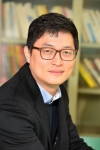
SK Hynix is expected to start using thick krypton fluoride (KrF) photoresist (PR) developed by its own affiliate in the production of 3D NAND, TheElec has learned.
SK Materials Performance, previously the electronics material business unit of Kumho Petrochemical that SK Group acquired for 40 billion won in 2020, developed the KrF PR, which recently passed SK Hynix’s quality test, sources said.
Samsung uses thick PR from Dongjin Semichem, which exclusively supplies to the tech giant.
SK Hynix’s move to have its own affiliate develop the key material for advanced NAND will make it more competitive against its compatriot rival in the memory market.
Revenue from KrF PR is also expected to climb for SK Materials Performance when the memory market, which is going through a downturn, normalizes next year.
SK Materials Performance’ KrF PR had a thickness of around 14 to 15 micrometers, similar to those made by Dongjin Semichem.
Japan’s JSR also developed its own PR but had a thickness of up to 10 micrometers.
‘Thick’ PR is needed in 3D NAND production as it makes them optimal for stacking.
For example, in a 100-layer NAND, making the layers one by one becomes costly. Using a thick PR during the process allows chipmakers to make multiple layers at a time.
Being thick means the PR is more viscose which negatively affects uniformity so their development is challenging.
SK Hynix is expected to apply the new PR when it starts expanding the production of 238-layer 3D NAND to coincide with market recovery.
It will procure PR mainly from its own affiliate and use JSR as a secondary supplier. This means advanced processes will use those made by SK Materials Performance and others by JSR.
SK Hynix was producing around 5,000 wafers per month for 238-layer 3D NANDs but this is expected to climb significantly soon, the sources said.
SK Group also acquired SK Trichem and is continuing to localize the production of key materials needed in semiconductor production.
In 3D NAND, narrowing the circuit length is less important than 2D chips, so chipmakers use legacy laser machines such as KrF lithography machines, which were widely used up to 130-nanometer chips. For 130nm to 90nm argon fluoride (ArF) equipment is used and more advanced chips now use immersion ArF equipment.
For its own NAND production, SK Hynix even used I-line lithography machines, which is a prior generation to KrF. The company used PR supply from JSR, TOK, and Dongjin Chem in 4 to 4 to 2 ratio during this time period.

